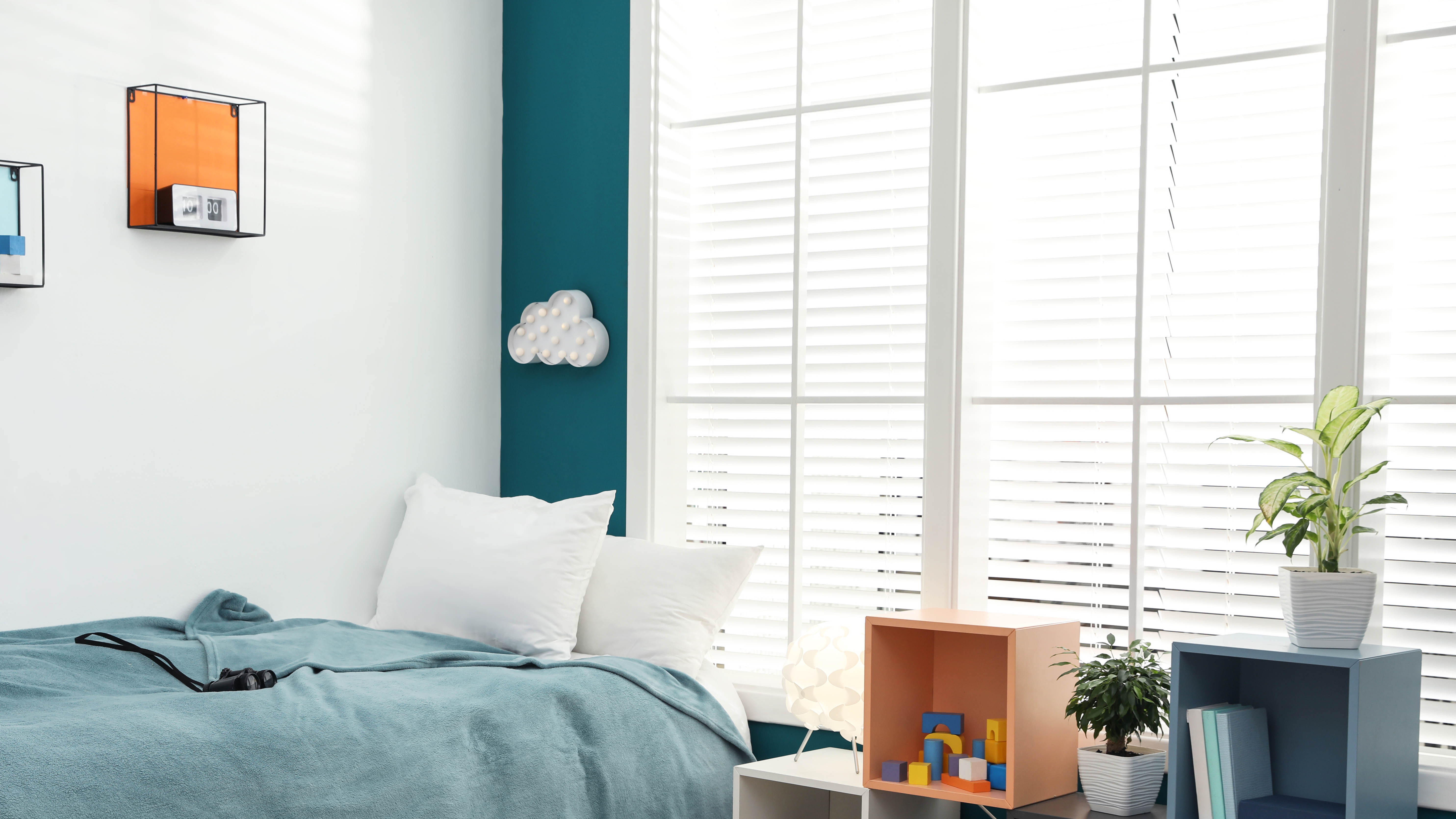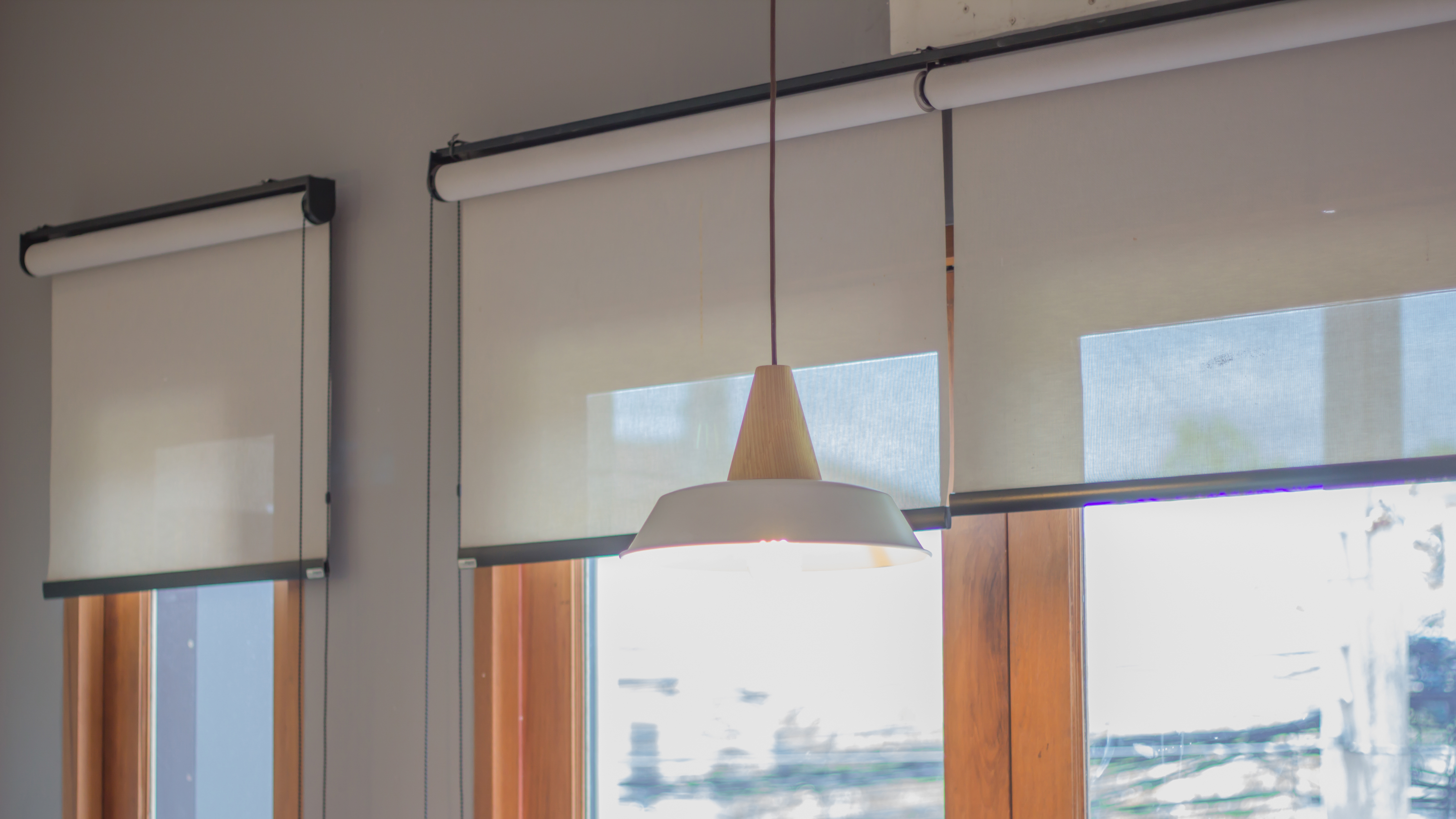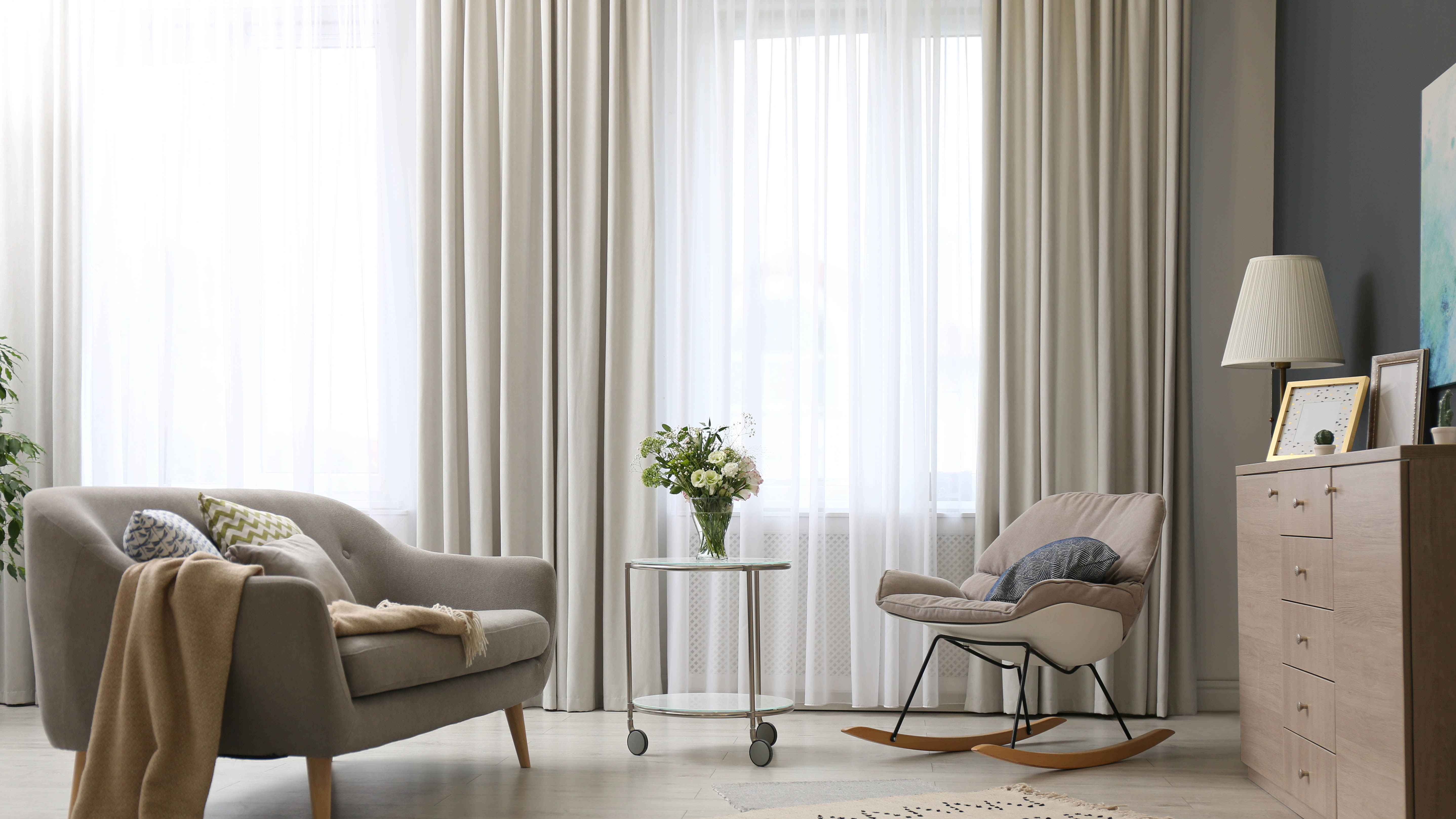Blinds vs curtains: which is better?
Are blinds better than curtains? We take a look at the pros and cons

Whether you’ve just moved into a new property or simply want to refresh your home, you’ll probably want to know are blinds better than curtains? In fact, window treatments are often overlooked when it comes to decorating, but the right style will help to allow the right amount of light, privacy needs, as well as spruce up your interior style.
This is especially the case if you want to know how to brighten a dark room with the right window treatment. What’s more, choosing blinds or curtains can make all the difference to the feel and atmosphere of a space.
So, are blinds better than curtains? And what are the differences? To help you decide, we take a look at the pros and cons of using both blinds and curtains.
Or find out if buying blackout curtains may be the answer.
The pros of using blinds
1. They filter in light better — Blinds offer more light control options and can be adjusted to your needs. Vertical or venetian blinds are particularly ideal for filtering in light, or reducing the glare of the sun, while still maintaining a level of privacy. Curtains simply dress the window, and can either be opened or closed.
2. More contemporary and ‘clean’ — Since blinds are fitted to suit a window perfectly, these offer a more clean, minimalist feel/look to a room. Popular contemporary styles of blinds include roman, roller, venetian and vertical blinds. Blinds also come in different slat sizes, thickness and materials, from plastic and wood to high-quality vinyl blinds.
3. Affordable to buy — Blinds are generally cheaper than curtains which is ideal for those on a budget. This is because blinds take less time to manufacture, and time to install. The least expensive type are roller blinds, which can cost between $8 and $50 per window, depending on the size and style you prefer. Made-to-measure curtains are usually more costly due to labor and materials, and can cost anywhere from $50 to $200 per window.
Sign up to get the BEST of Tom's Guide direct to your inbox.
Get instant access to breaking news, the hottest reviews, great deals and helpful tips.

4. Easy to clean and maintain — Blinds tend to have a hard, slick surface making it much easier to clean with ease. Simply close the slats to wipe down with a microfibre cloth or a damp cloth before drying with a fresh one. Curtains, on the other hand, take a bit of time to remove dust or to clean. More often, delicate or heavy drapes will require dry cleaning only.
5. They last longer — Blinds tend to last longer, as they are more durable and rigid than curtains. Most are made from materials with a special coating that makes them resistant to staining or discoloration over time. Curtains, on the other hand, are prone to discoloration, mold or staining.
The cons of using blinds
1. Blinds won’t completely block out the light — Despite being able to control the light, slat blinds won’t completely block it out. Unless they are blackout roller blinds, venetian or sheer blinds will always trickle in light, even when closed.
2. Not as energy efficient in cold weather — Unlike thick curtains, slat blinds are not as good at insulating a room, especially during winter. Although, you could opt for thermal, roller blinds available that are more energy saving. On the other hand, blinds are more energy efficient in warmer months, as the slats leak more heat from a room.

3. They don’t have as many bespoke designs — Blinds have a limited range of designs, compared to the different textures, prints and style of curtains. While you can get curtains custom-made to match your interior style, you can’t with blinds.
The pros of curtains
1. More styles and textures available — Curtains are available in a wide range of textures, thickness and designs to suit any room. Ranging from cotton, sheer and velvet to ones with thermal linings, you can even get them custom-made to suit your interior style. Blinds tend to be limited in design range.
2. Great heat insulator and sound proofing — Most quality curtains have a thick, heavy lining, making them a great insulator, and will save on your heating bills. Unlike blinds, they lack the slats where heat escapes. Not only do curtains block out any cold draughts, but also absorb loud sounds, which is ideal if you live in a noisy neighborhood.

3. Better at blocking out light — Generally, heavyweight curtains are better at blocking out the light. In particular, blackout curtains in the bedroom can aid with getting a good night’s sleep. Depending on the type, blinds tend to allow a little light to trickle through, even when closed.
4. More aesthetically pleasing — Curtains can often transform a room, creating a luxurious or dramatic feel to a space. In particular, bespoke curtains can add style and character to large windows in a living room, or bedroom. What’s more, you have the freedom to change over your curtains to suit your moods, while blinds are fitted to the window frame.
The cons of curtains
1. Harder to clean — Curtains pick up dust and dirt quickly, and so harder to clean as often as blinds. Plus, if placed in high-moisture conditions, curtains are prone to mold spores, discoloration or easily absorb odors. While you can steam clean curtains, more often they will need to be taken down to wash or dry clean to keep in good condition.
2. You can’t control the light levels — Unlike blinds, you can’t filter in light or adjust glare levels without fully opening up the curtains. When curtains are closed they block virtually all light coming into the room, so bear this in mind if your window faces the sun.

3. More expensive — Made-to-measure curtains are often more expensive than fitted blinds. This is because it uses more material and takes time to make. Of course, prices will vary on the type of material, design and length you would need for your windows. However, there is more scope to custom-make your own designs.
The bottom line
So, are blinds better than curtains? That all depends on your lifestyle, room and needs. In any case, there’s no harm in installing both blinds and curtains in your home. Ideally, place curtains in low-moisture areas such as living rooms and bedrooms to eliminate the risk of mold spores. This will also offer more design options, better insulation, and soundproofing.
While blinds are best suited for high-moisture spaces such as the bathroom and kitchen where mold is likely to develop. Plus, this will be more durable, easy-to-clean and offer both lighting control and privacy. And if you still can’t decide, you can always layer the two treatments together to have the best of both worlds!
If you enjoy revamping your home on a budget, learn how to paint kitchen cabinets to transform them or how to get paint out of the carpet if you have any messy spills. Before you paint a room though, check out how to clean baseboards first.
For more DIY tips, check out how to wallpaper a room like a pro, and if you're stripping walls, you'll need to know how to remove wallpaper before painting.

As the Homes Content Editor, Cynthia Lawrence covers all things homes, interior decorating, and garden-related. She has a wealth of editorial experience testing the latest, ‘must-have’ home appliances, writing buying guides and the handy ‘how to’ features.
Her work has been published in various titles including, T3, Top Ten Reviews, Ideal Home, Real Homes, Livingetc. and House Beautiful, amongst many.
With a rather unhealthy obsession for all things homes and interiors, she also has an interior design blog for style inspiration and savvy storage solutions (get rid of that clutter!). When she’s not testing cool products, she’ll be searching online for more decor ideas to spruce up her family home or looking for a great bargain!
